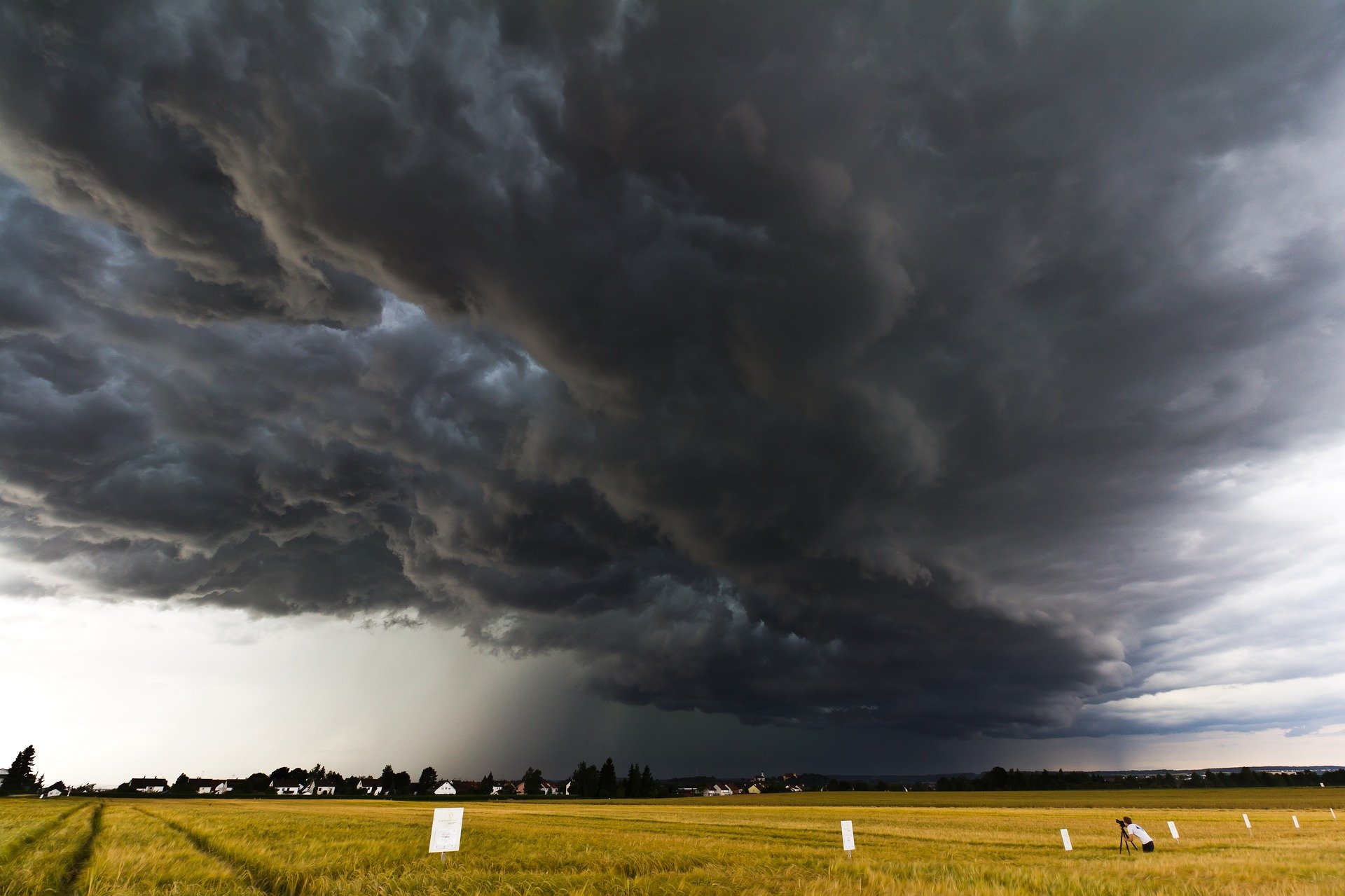As weather has become more erratic over the years, you may wonder what you can do as a farmer to protect your crops.
Mother Nature’s whims have proven challenging since the very earliest farmers first placed seeds in the ground. Wild weather – from drought to excessive moisture, damaging heat to killing cold – can decrease yields, damage crop quality, and delay (or even suspend) everything from seeding through to harvest.
With many Canadian farmers challenged by particularly volatile weather in recent growing and harvest seasons, finding ways to manage less-than-ideal environmental conditions is a top-of-mind priority for farmers, agronomists and agricultural researchers alike.
“Is weather today more unpredictable? I wouldn’t go that far. It’s wilder, its weirder, it’s wackier,” says David Phillips, a senior climatologist with Environment and Climate Change Canada.
“We’re not seeing any weather we haven’t ever seen before; it just has a different frequency. The 50-year storm becomes the 20-year storm. We’re seeing storms that are bigger, more out of season, more out of place, longer lasting, more intense. Storms are stormier, floods are floodier, droughts are droughtier.”
Unfortunately, says Canola Council of Canada Agronomist Keith Gabert, “There is no perfect recipe for dealing with crazy weather.” That said, he’s got a few tips he recommends to producers.
“The first advice I usually try to give growers is grow more than one variety,” Gabert explains. While he can’t give a magic number on how many varieties/hybrids of any specific crop a producer should grow in a season, he says producers should not pin all their expectations to one variety. Planting multiple varieties and multiple crop types spreads risk.
“It is well worth it to try out options. It does lower your risk. There are some differences between varieties that might prove better or worse given the conditions you’re facing in a given year. If you only grow one variety and you end up disappointed, you’ll be disappointed in the crop as a whole since you don’t have another hybrid to compare it to.”
Second, he reminds growers to make sure they’re “doing everything else right” to get a stand well-established and to promote a healthy crop throughout the growing season — seed well, provide adequate nutrition, and stay on top of pests, weeds and disease. A healthy crop has a better root system to access water in drought conditions, can achieve canopy close-up faster and more fully, better protects the soil from moisture loss, and can withstand environmental stress for longer than a weak crop.
Though doing everything “right” usually includes seeding early, Gabert cautions an early start doesn’t prove an advantage in all growing conditions.
Multiple studies show healthier soils can reduce damage caused by weather extremes. A study led by the Manitoba Forage and Grassland Association between 2009 and 2015 showed when conditions bounced from drought to flood to drought, healthier soils acted as a buffer against both moisture extremes because they pulled in and retained more moisture.
Agronomist, Soil Scientist and Founder of the Soil Health Academy, Ray Archuleta, agrees.
In a recent soil health webinar presented by three Albertan applied research associations, he showed water infiltration results for three soil types. A rotationally grazed pasture sample absorbed 12.4 inches of moisture per hour, a continuously grazed pasture sample pulled in 2.1 inches/hour, and a conventionally managed cropland sample managed just 0.5 inches/hour.
“We don’t have a run-off problem; we have an infiltration problem,” says Archuleta. “And we wonder why we’re always complaining about drought.”
Two of the best ways to improve soil health and soil structure, both of which are critical to water infiltration, are planting cover crops and keeping living roots in the soil for as much of the year as possible.
Breeding Better Varieties
A key factor in farmers’ ability to meet volatile weather into the future is research. While scientists are working hard on improving drought, heat, cold and excess moisture tolerance across many crops, expect a long, slow road to improvement.
“Abiotic stress tolerance – cold, drought, heat, etc. – are very difficult things to breed for,” says Research Scientist Robert Graf, a winter wheat breeder with Agriculture and Agri-Food Canada in Lethbridge, Alta.
The challenge has several aspects:
- First, variation for the trait that you hope to incorporate needs to naturally exist somewhere so you can ‘borrow’ those genetics. It can often take an extensive search all over the world to find plants, ideally of the same species, which express the tolerance you’re looking for. After that, the breeding process begins.
- Second, researchers need the right environment to select for the particular stress tolerance — to breed cultivars which can withstand cold weather. For example, researchers need cold temperatures which provide just the right differential – killing those that are weak but allowing the best to survive.
- Thirdly, the genetics of environmental stress tolerance are very complex. In contrast, breeding for resistance to some diseases often only requires one or two effective genes, and the development of molecular markers to track the resistance is easier.
- Finally, and perhaps most challengingly, cultivars which are released to producers must exhibit much more than simply tolerance to one stress — they also need to offer all of the desired yield, agronomic, disease resistance and quality characteristics.
“At this point, we simply don’t have all of the information necessary,” explains Graf. “But over time, the development of genomic selection models and molecular markers is increasing our ability to select from the huge numbers of plants that are required.”
Volatile and/or unusual weather can also impact disease and pest spread.
For example, says Graf, “Projections suggest that wheat stem sawfly is likely to become a more widespread problem in western Canada, and emerge as a pest in winter wheat. We’ve been working on breeding solid stem winter wheat varieties for about 15 years now. If and when it becomes a problem in western Canada as it has in Montana, we want to be ready for it. As plant breeders, we have to be looking forward a decade or even more.”
There’s no question Mother Nature can be unruly, but Phillips thinks Canadian farmers are well positioned to rise to volatile weather’s challenges.
“Everything about farmers makes me excited and optimistic. They have ingenuity and resilience. They are risk takers. They are willing to try things. They see opportunities and they’re already changing to meet those opportunities. Who would have thought of growing pulses on the prairies 20 years ago? And, they listen to the science and ag agents,” he says.
“It’s not the doom and gloom story that some think. There are going to be a lot of clear winners if farmers follow trends, experiment more, list to ag agents, and take advantage of new opportunities.”
New Varieties
Winter Wheat Breeder with Agriculture and Agri-Food Canada in Lethbridge, Alta., Robert Graf has a new and creative idea for helping farmers respond to volatile weather more flexibly. He is currently working on developing new wheat cultivars which can be planted in either the fall or spring.
“For lack of another word and to differentiate these [cultivars], I’m calling them flex wheats,” says Graf.
Based on winter wheat germplasm, these lines have excellent cold tolerance and a very strong photoperiod requirement, which means seedlings that start growing in the fall will stay vegetative until longer spring days allow them to restart growth and become reproductive. However, because Graf has bred out the vernalization (winter cold) requirement, they can be planted in the spring and grow equally well.
“Very often, there are farmers who plan to seed winter wheat and then the weather turns, and they can’t get it in. They have seed and fertilizer and other inputs on hand, so in a normal scenario, they’d have to wait until the following fall to plant the winter wheat seed. The interesting thing with a flex wheat is they could take the seed they’d planned to plant in the fall and instead seed it in the spring.”
Graf cautions flex wheat’s breeding efforts are still in very early days. While trials show the experimental lines survive as well as some winter wheats, many agronomic quality and disease resistance questions aren’t yet answered.
“I’d say that this is on a 15-year-plus horizon,” he says.
Graf cautions that, unfortunately, a spring-seeded flex wheat — despite having winter wheat cold tolerance genetics — won’t likely offer enhanced tolerance to volatile early spring temperatures, as it takes several weeks for cold tolerance to build in a plant. It also won’t offer tolerance to late summer frosts.





